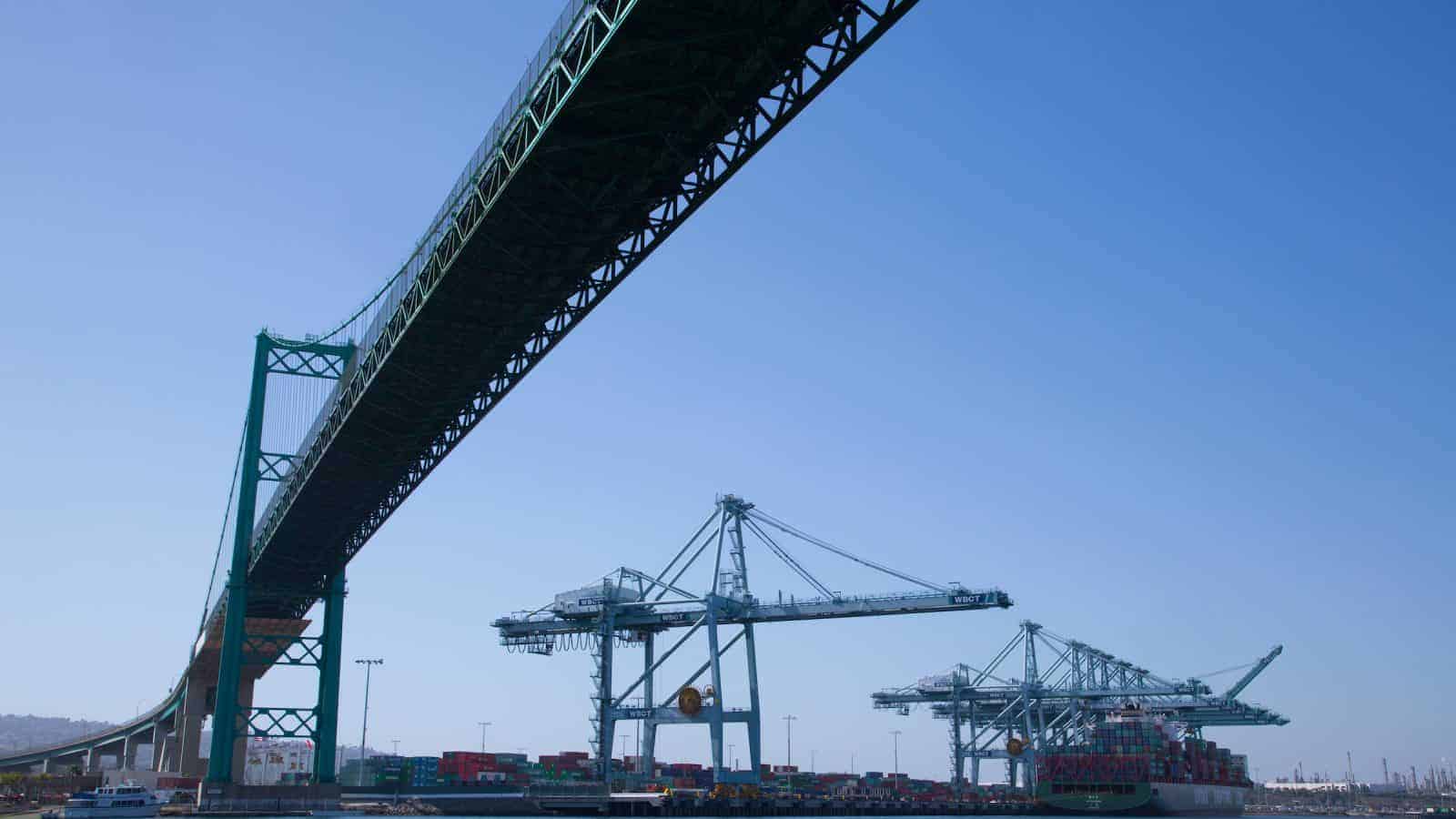5G Is Powering the Modernization of Manufacturing in America
According to New Report from National Association of Manufacturers and CTIA
Washington, D.C.—The National Association of Manufacturers and CTIA today released a new joint report highlighting the key role 5G is playing in manufacturing in America. The report, “How 5G Is Modernizing Manufacturing,” explores how manufacturers and wireless providers are leveraging robust commercial 5G networks to fuel the Manufacturing 4.0 movement and make American factories safer, more efficient and more innovative—all while building a more resilient, secure and prosperous nation.
The report finds that to continue our rich history of innovation, production, and global leadership, America needs a robust 5G strategy that includes a pipeline of more licensed spectrum to support manufacturers’ ever-expanding use of 5G.
“5G is vital to the Manufacturing 4.0 movement that’s propelling America to be the global hub for smart, modern manufacturing,” said NAM President and CEO Jay Timmons. “Manufacturers are harnessing 5G to make workplaces safer, boost efficiency and strengthen resilience across our operations. By enabling real-time actions and supporting new technologies like AI, 5G is giving manufacturers more tools to sharpen our competitive edge, support more people and secure America’s leadership in the global economy.”
The wireless and manufacturing sectors are working together to leverage 5G’s unprecedented speeds, low latency and high capacity to power new innovations—particularly through the use of AI. According to the 2025 Future of Manufacturing Project Survey, “Shaping the AI-Powered Factory of the Future,” from the Manufacturing Leadership Council (the NAM’s digital transformation division), more than half of manufacturers already use AI in their operations, with 61% expecting investment in AI will increase by 2027. Impact on operational performance, cost savings and worker productivity/efficiency are all above 60%. 5G helps manufacturers deploy AI tools so they can evaluate large datasets and identify efficient solutions quickly—whether through supply chain management, predictive maintenance for machinery, quality control or improving the employee experience.
“The wireless industry is proud to partner with manufacturers to drive American innovation, productivity, and global leadership,” said CTIA President and CEO Ajit Pai. “To support the wireless data needs of manufacturers and other leading U.S. industries, it is imperative that policymakers continue to take action to ensure additional mid-band spectrum is available for 5G.”
The report features real examples of how 5G is transforming manufacturing, including by:
- Powering VictoryXR and Taqtile’s AR headsets to provide immersive training, offering engaging upskilling opportunities while enhancing employee productivity and safety;
- Connecting Seegrid’s autonomous mobile robots to deliver heavy appliance parts safely around Whirlpool’s factory floor, freeing up employees for more complex tasks;
- Providing a real-time, high-definition monitoring system that leverages machine learning capabilities to improve quality control for Hitachi, identifying defects at a sub-millimeter level;
- Protecting Cummins’ intellectual property with highly secure 5G networks that also power robotics to bring materials around the facility, detect product defects, enhance employee training through AR/VR applications, and monitor equipment via sensor systems; and
- Powering innovation and productivity on the factory floor for many other manufacturers like Newport News Shipbuilding, General Motors, Rockwell Automation, Ericsson, Samsung, and more.
These innovations are driving the U.S. economy forward. Boston Consulting Group found that 5G networks will add $1.5 trillion in GDP and 4.5 million in jobs to America’s economy this decade alone.
As this report makes clear, 5G is not just a next-generation network—it’s the foundation for the future of manufacturing in America. By accelerating innovation, enhancing safety, enabling real-time decision-making and strengthening our industrial base, 5G empowers manufacturers to lead in a fiercely competitive global economy.
-NAM-
The National Association of Manufacturers is the largest manufacturing association in the United States, representing small and large manufacturers in every industrial sector and in all 50 states. Manufacturing employs nearly 13 million men and women, contributes $2.90 trillion to the U.S. economy annually and accounts for 53% of private-sector research and development. The NAM is the powerful voice of the manufacturing community and the leading advocate for a policy agenda that helps manufacturers compete in the global economy and create jobs across the United States. For more information about the NAM or to follow us on Twitter and Facebook, please visit www.nam.org.
NAM to Congress: Reauthorize Surface Transportation Funding
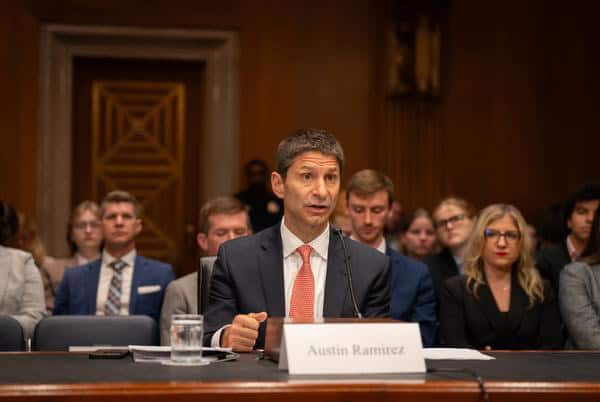
“To put it simply, investments in infrastructure are investments in manufacturing,” Husco President and CEO and NAM Executive Committee member Austin Ramirez told the Senate this week.
What’s going on: “Modern, dependable transportation helps manufacturers make and move our products,” Ramirez, whose company makes hydraulic and electromechanical control systems, told the Senate Committee on Environment and Public Works at a Wednesday hearing on crafting the next highway bill.
- Infrastructure projects “generate productivity gains and induce demand for manufacturing goods—stimulating the economy and bolstering American competitiveness,” said Ramirez.
Funding in action: Husco has seen firsthand the benefits of robust infrastructure investments, Ramirez continued.
- “Our customers are in the automotive and construction industries. And Husco families drive over the roads and bridges improved by highway projects. Several are turning dirt this year in Waukesha County.”
Why it’s crucial: Failure to reauthorize key surface transportation programs would result in interruption of these critical investments in U.S. roads and bridges, hitting manufacturers hard, Ramirez told the committee.
- “We cannot go back to the fits and starts of highway bill extensions. Our industry needs certainty to invest, plan and hire in America.”
Permitting reform: Ramirez also explained how America’s “complex permitting laws impact investment decisions” and encouraged the committee to adopt comprehensive permitting reforms that expedite project approvals and put a stop to “endless litigation.”
What should be done: Policymakers should “seize the opportunity” to make “robust investments in our surface transportation infrastructure,” Ramirez said. This should include efforts to strengthen the Highway Trust Fund, expand highway capacity and connectivity, implement intermodal improvements to bolster the country’s freight network and enact much-needed permitting reform.
Other voices: Other manufacturers recently sat down with the NAM and United for Infrastructure, where the NAM serves as a steering committee member, to discuss how infrastructure impacts their businesses. Leaders from CRH, Nucor and Fluor—sponsors of the NAM’s and United for Infrastructure’s Infrastructure Week kickoff event—spoke about the importance of infrastructure investments and modernizing our infrastructure to keep products moving and manufacturers operating.
- “As we look at reauthorizing the [Infrastructure Investment and Jobs Act] a really important piece of that was the higher baseline for federal highway formula funding, which we know through our experience with state DOTs needs to continue to grow in order to meet the needs of growing states,” said Fluor Senior Director of Government Relations Nathan Robinson.
- “If we’re going to truly harness the power of what AI is going to bring us, what machine learning’s going to bring us, all the things that truly are the future [of the] economy, we’ve got to get the way we move people and goods around in much better shape,” said Nucor Executive Vice President of Business Services Ben Pickett.
- “Permitting reform has absolutely got to happen for us. We’d like to see … a less prescriptive bill and more money go to the states through [the] funding formula. … When states have funding security and certainty, then they’re able to go raise revenues,” said CRH Executive Vice President of Government Relations Ryan Lindsey.
The last word: “Our industry depends on a robust, modern, efficient transportation system—and you can promote domestic manufacturing by getting a highway bill done this Congress,” Ramirez concluded.
Washington Post Editorial Board: America Needs Permitting Reform

Endless litigation has delayed much-needed American infrastructure development for decades—and that has to stop, as the NAM and manufacturers have long argued. The Washington Post (subscription) editorial board makes the case that Congress must step up and fix the permitting process to unlock American investment and growth.
Recent developments: The recent Supreme Court ruling that limited the National Environmental Policy Act—in which the NAM filed an amicus brief—is a step in the right direction.
- In that case, “The court decided that the U.S. Surface Transportation Board could approve an 88-mile train track even if it might move crude oil from Utah to refineries on the Gulf Coast,” the Post noted. “The board didn’t have to assess the potential future impacts if the new track encouraged more oil drilling on one end and more oil refining on the other.”
- In other words, environmental review was limited to the environmental impact of the project itself—as intended by the statute—rather than a more expansive investigation into the potential uses of the finished project.
A long-standing problem: Gaming the permitting process to stop development is nothing new.
- “In the 1970s, a ‘new’ species of freshwater fish called the snail darter was discovered during NEPA research into the building of the Tellico Dam in Tennessee.”
- “For the project to be completed, Congress had to exempt it from the Endangered Species Act. It turned out that the fish was not endangered. It wasn’t a separate species. Opponents of the dam ‘discovered’ it to get the dam stopped.”
More at risk: Numerous infrastructure projects are still in limbo today due to this sort of maneuvering by groups seeking to delay needed investments.
- “A flower called Tiehm’s buckwheat might stand in the way of a Nevada lithium mine green-lit by the Biden administration,” for example.
- But, as the Post noted, “Maybe the idea of protecting every ecosystem at any cost should be reconsidered. The flower, which apparently grows only on 10 acres in the proposed mine’s footprint, is a close relative of other buckwheats. Is it a distinct species? Perhaps it could be grown elsewhere?”
- And another important question: “Perhaps the battle against climate change—which will require lithium to build lithium-ion batteries to power electric vehicles—should take precedence?”
Calling on Congress: “NEPA review had grown to require every government decision to survive endless judicial challenges, poorly serving the nation and the natural environment in which it sits. Congress should not leave it to courts to fix,” the Post concluded.
The NAM agrees: “Comprehensive permitting reform is essential to building a strong and more competitive manufacturing economy. As [the Post] notes, Congress should reevaluate environmental impact reviews in order to ease construction of critical infrastructure projects,” said NAM Managing Vice President of Policy Charles Crain on X.
It’s Infrastructure Week!

During United for Infrastructure’s Infrastructure Week, the NAM—an active member of the steering committee—participated in several events in Washington, D.C., highlighting the urgent need for permitting reform to accelerate U.S. building projects.
A reception: The NAM hosted a reception to kick off Infrastructure Week 2025 at its headquarters in partnership with United for Infrastructure, with special guest Sen. Shelley Moore Capito (R-WV), chair of the Senate Committee on Environment and Public Works.
- Nucor, Fluor Corporation and CRH sponsored the event.
A panel: NAM Vice President of Domestic Policy Chris Phalen spoke at the United for Infrastructure signature event, underlining the need for commonsense trade and permitting policies.
- “I think we can work with governments to address supply chain challenges,” he said when asked about tariffs. “We have a really important window of opportunity over the next 50 odd days to get some deals that provide zero tariffs on industrial trade. That is what manufacturers support.”
- “Manufacturers rely on transportation networks … to get our goods to and from ports to customers,” Phalen said regarding infrastructure, “but we also are making everything that goes into making transportation work, from aluminum to steel, from asphalt to aggregates, copper, circuitry and the large industrial machinery that builds [and] maintains roads, bridges, factories [and] power plants. So, it’s kind of a virtuous cycle where we’re investing in infrastructure.”
“Comprehensive manufacturing strategy”: Phalen also gave a brief overview of the NAM’s “comprehensive manufacturing strategy.”
- Revising the regulatory framework is a key priority, he said. “We’ve submitted dozens of letters to 10 separate federal agencies as part of President Trump’s deregulatory agenda. Manufacturers every year are spending $350 billion just to comply with federal regulations. And so we’ve been really pleased to see the start of this regulatory rebalancing from the administration.”
- Phalen cited moves including “reopening LNG export facility applications, rebalancing Clean Air Act rules … and streamlining and improving the process to improve new chemicals … at the EPA.”
- “Probably most important is permitting reform,” he added. “Manufacturers operate and employ and invest in the communities where we’re producing, so we don’t want to see any short-circuiting of public input. … [T]here does have to be recognition, though, that the way that things were set up in the late ’60s and early ’70s is hindering infrastructure of all kinds right now.”
A roundtable: The NAM also participated in a roundtable on continuing federal support for water infrastructure investments. NAM Director of Transportation, Infrastructure and Labor Policy Max Hyman shared perspectives on how these investments benefit manufacturers by driving demand for their products and providing an essential service for operations.
The last word: As NAM President and CEO Jay Timmons said during the reception, “Infrastructure is the foundation of manufacturing in the U.S.”
How Manufacturers Can Save Millions Through Incentives Programs
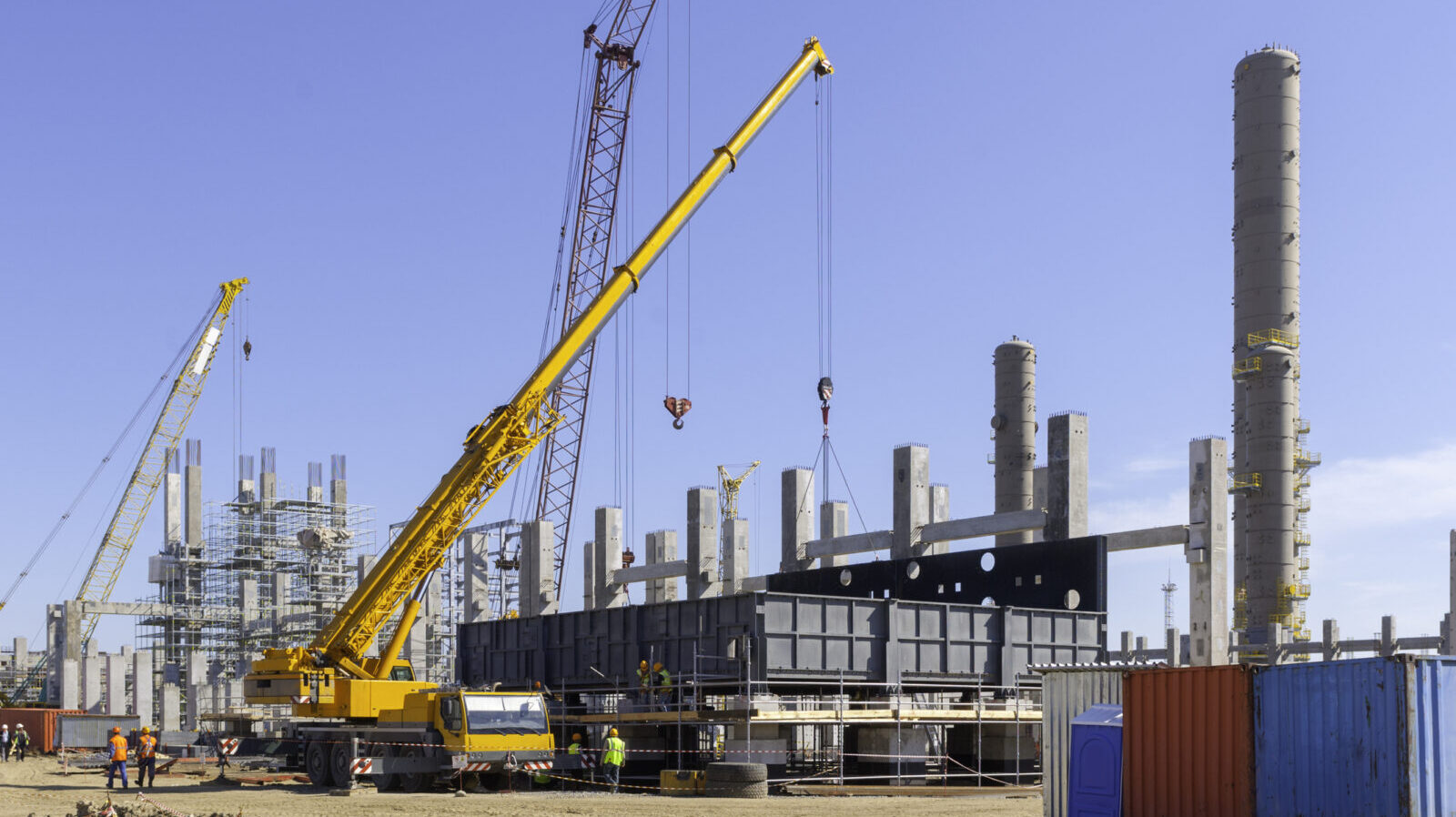
“$80 billion is given away every year in state and local incentives,” according to Atlas Insight Managing Partner Brian Corde. “Plus, the Biden administration has added $455 billion just in federal grants.”
In this investment landscape, manufacturers need all the help they can get finding, applying for and complying with these incentive programs. Atlas Insight, the NAM’s partner for its Incentives Locator, walks companies through this entire complicated process.
Last week, we talked to Corde and Kathy Mussio, Atlas’s other managing partner, about how companies select their new sites. This week, we’ve asked them what manufacturers need to know about incentives.
How do incentives work? Incentives come in two forms, Corde and Mussio explained. First is the type you automatically qualify for if you meet the requirements, known as statutory or as-of-right incentives.
- The second is the type that Atlas lends its expertise to—discretionary incentives. These programs offer funds and other pools of money that require business cases, negotiation, applications, and later, proof that a company has met its stated obligations (also known as compliance).
- These programs can take many forms. As Mussio put it, “Some states have programs that offer cash to help close the financial gap between two competing locations or increase a project’s ROI—helping to make a location more competitive in the financial analysis.”
- There are many, many incentives out there, the Atlas partners told us, and the most important steps are understanding which ones a company may be eligible for and helping clients quantify the potential savings.
What if you’re staying put? These incentives aren’t just for new facilities, Corde and Mussio emphasized. “A majority of incentives are given to companies staying in place,” Corde added.
- Companies can take a lot of actions to qualify for incentives—expand their workforces, buy new equipment, train workers in new technologies or add square footage for new production lines.
- “It’s our job to help NAM members identify their projects that could use incentives. Then we benchmark the incentives, then negotiate on the companies’ behalf, then lock the incentives down with the state or city,” Corde said.
What’s benchmarking? Atlas compares incentive offers from states and localities with the incentives awards that similar companies have received in the past, another way to help ensure that their clients get the best possible deals. There’s always room for negotiation, the partners say.
- Atlas keeps two databases: the first, a listing of all the incentives that exist on the federal, state and local levels, along with all the necessary forms, key contacts and any other requirements. The second database is a list of what other companies have received for similar types of projects.
- This allows Atlas to identify the typical dollar range that an incentive should provide—so a company knows whether it has been offered a good deal, and whether it should negotiate, or even go elsewhere.
How do you get the money? After companies successfully secure an incentive award, they must follow compliance schedules to ensure they keep receiving the funds as project milestones are met, while also retaining documentation in case of audit.
- The government offering the incentive typically requires filings to verify how many employees were hired, the wages they earned, even the employers’ contributions to health insurance premiums.
A lot to lose: “We are being conservative when we say that 50% of incentives awarded never pay out,” Corde said, all because companies fail to fulfill compliance requirements.
How can Atlas help? Atlas creates a “holistic incentive management for its clients, for the entire life of the incentive,” so that companies actually receive their money, the partners explained. It even helps with old incentives that remain incompletely documented.
- “When we retained Atlas, it enabled us to bring several one-off incentive agreements around the U.S. into a centralized process,” said a Schneider Electric spokesperson. “That made it so much easier for us to document our part of the expansion agreements and collect the incentives we were owed. Plus, their performance-based fee for this process has been best in class.”
How to get started: The NAM Incentives Locator is a service for NAM members, which provides a complimentary initial assessment call and preferred rates on contracted services, including an exclusive success-based fee schedule.
- Atlas is often “only paid for successful outcomes, either a confirmation letter or when the company receives the money over time. We will help you be successful and then benefit once you are,” said Corde.
The bottom line: “You need to have a strategy to go after these incentives, because your competitors are.”
Ports Negotiations Break Down
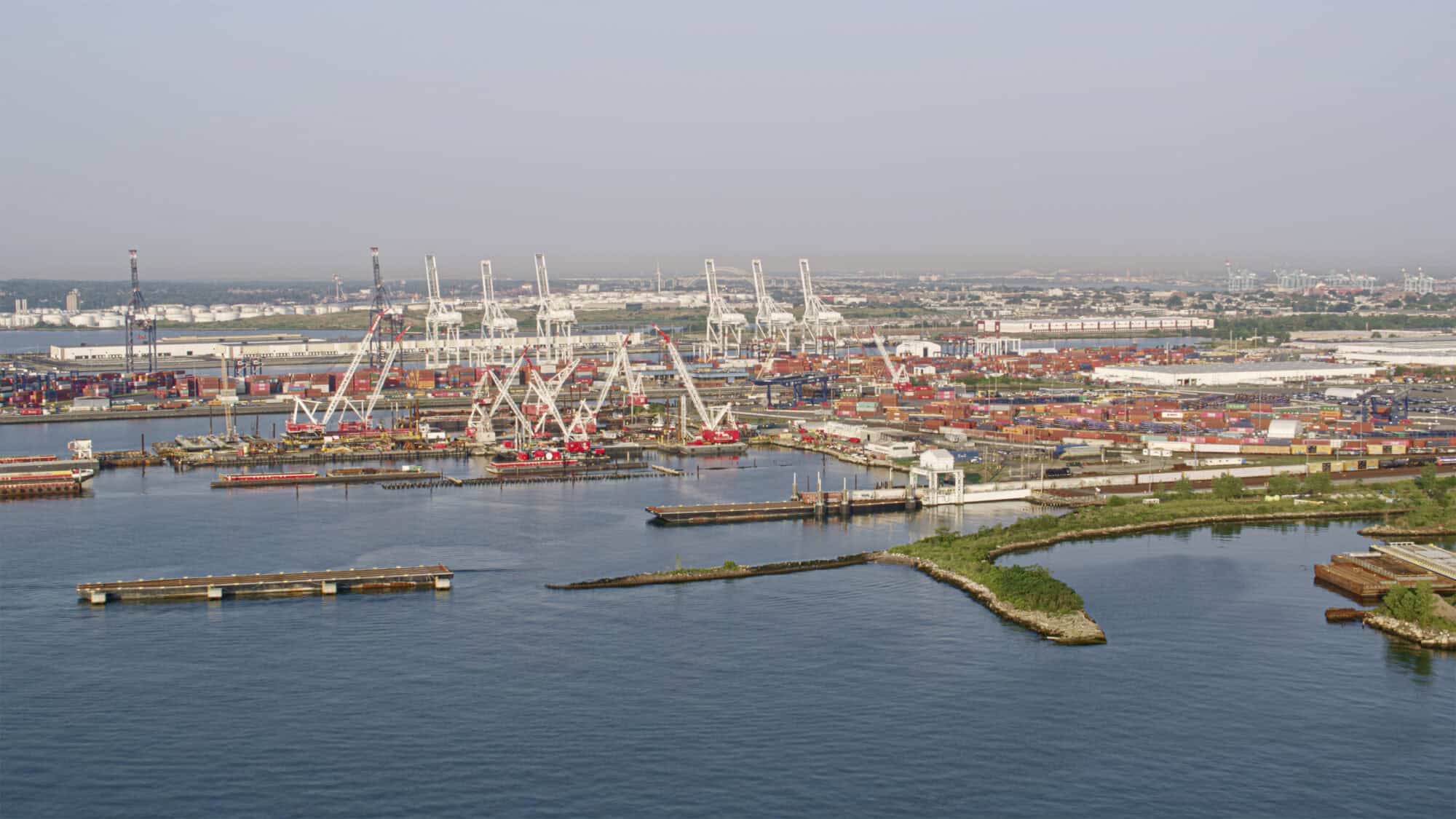
Negotiations between the U.S. Maritime Alliance and the International Longshoremen’s Association have stalled again, “raising the possibility of renewed strikes at U.S. East and Gulf Coast ports in January” (gCaptain).
What’s going on: Talks between the dockworkers and their employers broke down this week over proposed language regarding the use of automation, according to the ILA.
- “This impasse follows a tentative agreement reached in early October, which ended a three-day strike across Atlantic and Gulf Coast ports” and extended the workers’ labor contract until Jan. 15, 2025.
- If the parties are unable to reach a long-term agreement by that date, the union could strike again.
Why it’s problematic: Even a brief work stoppage could have major economic consequences, according to widely cited NAM estimates.
- A strike at East and Gulf Coast ports would jeopardize $2.1 billion in trade every day and could reduce gross domestic product by up to $5 billion a day.
What must be done: “These ports are critical components of the manufacturing supply chain and move products on which Americans depend,” said NAM Director of Transportation, Infrastructure and Labor Policy Max Hyman. “Both sides should return to negotiations as soon as possible and reach a lasting resolution that prevents needless economic destruction.”
Manufacturers on Port Strike: By Resuming Work and Keeping Our Ports Operational, They Have Shown a Commitment to Listening to the Concerns of Our Industry
Washington, D.C. – Following news that the International Longshoremen’s Association and the United States Maritime Alliance have reached an agreement to extend the Master Contract until Jan. 15, 2025, National Association of Manufacturers President and CEO Jay Timmons released the following statement:
“Manufacturers are encouraged that cooler heads have prevailed and the ports will reopen. By resuming work and keeping our ports operational, they have shown a commitment to listening to the concerns of manufacturers and other industries that rely on the efficient movement of goods through these critical gateways. This decision avoids the need for government intervention and invoking the Taft-Hartley Act, and it is a victory for all parties involved—preserving jobs, safeguarding supply chains and preventing further economic disruptions.
“Manufacturers depend on the stability of our ports to continue building, innovating, delivering products to American families and supporting communities across the country. We commend the International Longshoremen’s Association and the U.S. Maritime Alliance for coming together in the spirit of collaboration and urge both parties to use this time to reach a fair and lasting agreement. Another strike would jeopardize $2.1 billion in trade daily and could reduce GDP by as much as $5 billion per day. We cannot afford that level of economic destruction.”
-NAM-
The National Association of Manufacturers is the largest manufacturing association in the United States, representing small and large manufacturers in every industrial sector and in all 50 states. Manufacturing employs nearly 13 million men and women, contributes $2.87 trillion to the U.S. economy annually and accounts for 53% of private-sector research and development. The NAM is the powerful voice of the manufacturing community and the leading advocate for a policy agenda that helps manufacturers compete in the global economy and create jobs across the United States. For more information about the NAM or to follow us on Twitter and Facebook, please visit www.nam.org
Manufacturers: Resolution in Canadian Rail Dispute Avoids Critical Disruption to Supply Chains
Washington, D.C. – Following the Canada Industrial Relations Board’s decision ordering rail workers back to work and carriers back to operations, National Association of Manufacturers President and CEO Jay Timmons released the following statement:
“Manufacturers in the U.S. and in Canada were rightly concerned about the serious impact of a work stoppage that would harm workers, the economy and the quality of life for the many millions who depend on our products. As I discussed with Prime Minister Trudeau in July, if rail traffic were to grind to a halt, workers, small businesses and communities on both sides of our border would be hardest hit. Thankfully, the prime minister and Minister of Labour and Seniors Stephen MacKinnon heard our concerns and took decisive action to avert a significant disruption.
“The manufacturing industry is the engine of the North American economy. The conclusion of this stage of the negotiations means that this engine will continue humming. It is welcome news to manufacturers of all sizes, who count on tens of billions of dollars in cross-border trade between the U.S. and Canada—and the supply chains that make it possible to create life-saving products for hundreds of millions of people.”
-NAM-
The National Association of Manufacturers is the largest manufacturing association in the United States, representing small and large manufacturers in every industrial sector and in all 50 states. Manufacturing employs nearly 13 million men and women, contributes $2.89 trillion to the U.S. economy annually and accounts for 53% of private-sector research and development. The NAM is the powerful voice of the manufacturing community and the leading advocate for a policy agenda that helps manufacturers compete in the global economy and create jobs across the United States. For more information about the NAM or to follow us on Twitter and Facebook, please visit www.nam.org
Manufacturers Warn of Supply Chain Disruptions from Canadian Rail Shutdown
Washington, D.C. – As concerns mount about a potential work stoppage around Canada’s rail network that affects the entire North American manufacturing supply chain, National Association of Manufacturers President and CEO Jay Timmons released the following statement:
“North American manufacturing supply chains depend on functioning rail links. If rail traffic grinds to a halt, businesses and families across the country will feel the impact. Manufacturing workers, their communities and consumers of all sorts of products will be left reeling from supply chain disruptions. Rail transport between Canada and the United States moves billions of dollars of goods every month, and according to the U.S. Department of Transportation, 14% of the total trade value between our two countries in June 2024. We’ve seen the impact of disruptions at the Canadian border before, and it’s imperative that we avoid another stoppage.
“The flow of materials and products across the U.S.-Canada border is already slowing as preparations are made for a potential work stoppage. Policymakers in the U.S. and Canada must recognize that the stability and reliability of critical supply chains—which directly affects our quality of life—depends on efficient movement of goods across the border.”
Additional data: Total trade flows between Canada and the U.S. via rail in June 2024 were $9.131 billion, representing roughly 14% of total trade flows between the two countries via all modes of transport. Imports totaled $5.319 billion, while exports totaled $3.812 billion. In the first six months of 2024, total trade flows via rail were $55.657 billion. In 2023, total trade flows via rail were $113.860 billion.
-NAM-
The National Association of Manufacturers is the largest manufacturing association in the United States, representing small and large manufacturers in every industrial sector and in all 50 states. Manufacturing employs nearly 13 million men and women, contributes $2.89 trillion to the U.S. economy annually and accounts for 53% of private-sector research and development. The NAM is the powerful voice of the manufacturing community and the leading advocate for a policy agenda that helps manufacturers compete in the global economy and create jobs across the United States. For more information about the NAM or to follow us on Twitter and Facebook, please visit www.nam.org.
Energy Permitting Reform Act Will Help Unlock the Full Potential of Manufacturing Industry, Is Critical for Competing with China
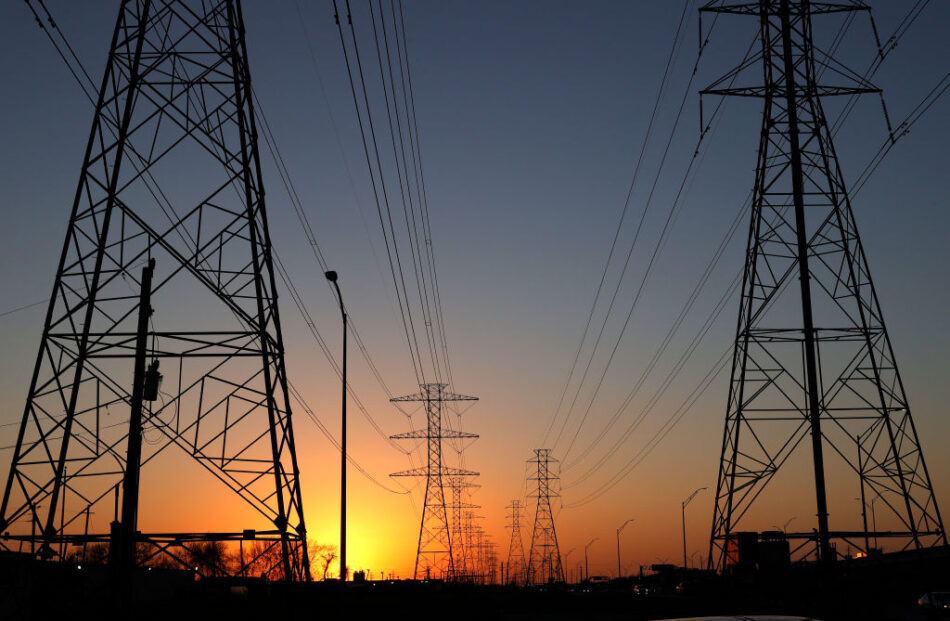
Washington, D.C. – Following the bipartisan passage of the Energy Permitting Reform Act of 2024 markup in the Senate Energy and Natural Resources Committee, National Association of Manufacturers President and CEO Jay Timmons released the following statement:
“Manufacturers have been calling attention to the consequences of America’s broken permitting process for years, while building a case for reform. Both sides of the aisle now realize that these critical updates will enable Congress to achieve its broader energy goals and the development of:
- Renewable energy projects;
- Pipelines for traditional energy, hydrogen and carbon capture storage;
- Critical mineral mines and processing facilities;
- Semiconductor and battery manufacturing fabs;
- Interstate transmission lines; and
- Hydroelectric and nuclear power plants.
“These developments are absolutely critical for us to be able to compete with China. As this legislation progresses, many of the commonsense policies outlined in the Energy Permitting Reform Act will help unlock the full potential of our industry, bolster our nation’s energy security and create American jobs. Streamlining permitting processes, cutting red tape, requiring that federal agencies make timely decisions and reducing the potential for baseless litigation will help prevent years-long delays for manufacturers—delays that give other countries a distinct advantage and put our own security at risk. America should never be content with a system that can take 10 or 15 years to approve urgently needed projects, when approval can take a fifth of that time in other countries that still adhere to high standards.
“We thank Chairman Manchin and Ranking Member Barrasso for introducing this legislation and look forward to working with lawmakers to advance it.”
-NAM-
The National Association of Manufacturers is the largest manufacturing association in the United States, representing small and large manufacturers in every industrial sector and in all 50 states. Manufacturing employs nearly 13 million men and women, contributes $2.89 trillion to the U.S. economy annually and accounts for 53% of private-sector research and development. The NAM is the powerful voice of the manufacturing community and the leading advocate for a policy agenda that helps manufacturers compete in the global economy and create jobs across the United States. For more information about the NAM or to follow us on Twitter and Facebook, please visit www.nam.org.
